I am so proud, again, of all the participants as individuals and as teams. There are a few other notable teams that were crucial in realizing these project work: ZERO1, L’Uzine, and the American Consulate in Casablanca.
I want to thank them for their help in supporting the program from start to finish and for inspiring the project that I am currently wrapping up as part of my exchange. This was a team effort.
---
In particular, the energy and excitement of L'Uzine have been my muses for this project.
The same line repeats in every iteration of the project proposal leading up to my departure to Morocco, “My personal project will be an architectural scaffolding for the participant projects…” Familiar neither with the organization nor with the participants, I imagined I would build a structure or design a space that could host each of the participant project prototypes.
But over the course of the workshops and as the participant projects developed, I realized that this scaffolding already existed; every day, the flurry of events and excitement, the rhythms of dance and meditative motions of textile design, the focus of the camera lens, the reverberations and translations of music, the flittering of fabrics, the echoes of philosophical conversations, and the fun that moved across, up and down, and around the building of L’Uzine.
Raucous laughter and decisive actions emanate from the 1.5th-floor administrative offices. Delicious smells waft up the stairs from the kitchen where Fantom and Fatima prepare a meal for the staff and visitors to eat together, pausing between energetic spurts of technical management, deconstruction, shopping, posting, meetings, and, of course, answering seemingly incessant questions from guest program coordinators, like me.
Zineb Haddaji’s responsive, positive, and witty perspective kept the program and the projects moving within and beyond office hours. Maria Daif’s infectious enthusiasm gave context to the projects. The care with which Nadir Houboub considered each shot, sequence, and composition and the poetry of each image by Ahlam Maroon represented our program so eloquently. Hamza Lyoubi's even and careful timing and articulation, and Abdessamad Bourhim’s intense and speedy technical execution bolstered our work. The workshops and exhibits also would not have been the same without Dounia Jawhar's calming presence, Sabrine Hakim's insightful questions, Abdessamad Noudirate's energy and resourcefulness, and Kristi Jones’s indispensable insight and support. And, last but not least, Fouad was always ready to open a door.

The concept for my project came from the recognition that L’Uzine — as a building and organization — is a scaffolding that can and does support not only prototypes but ongoing work on the critical questions and concerns expressed and explored by the participant projects. L’Uzine’s heart and muscle are already doing the inspiring work of community building, recognition, and representation. Its body is filled with diverse projects and programs that display, disclose, and question.
L’Uzine’s building is not only a center of culture, it is also a cultural puzzle. It is a place where mega-cultures, mass-cultures, and sub-cultures connect, coincide, collide, and fuse together. Its spaces are allocated to music, dance, theater, performance, photography, painting, and design, and its circulation spaces host encounters among artists. The cultural puzzle re-imagines the way the building is subdivided — grouping spaces to create variegated cultural portraits through a diversity of disciplines and sensory stimuli.
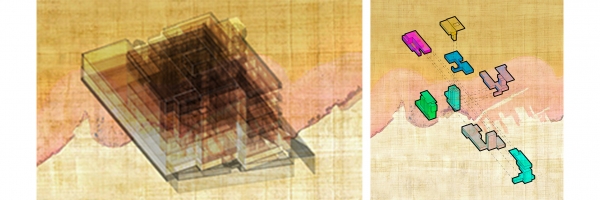
This is a curatorial concept:
Three puzzle pieces represent the heart and muscle — L'Uzine's staff — the Heart, the Arm, and the Spine.
Five puzzle pieces represent cultural exhibitions, inspired by the Rhetorical City participant projects: each one uses a collection of sensory spaces to immerse visitors in a sub-culture — each organ perceiving, processing, and interpreting different aspects of the exhibit.
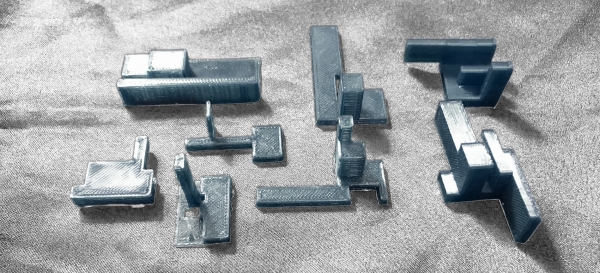
Meanwhile, the Cultural Canvas & Composites concepts are a fusion of the American Arts Incubator model and some of the incredible work that is already underway at L’Uzine.
AAI bolsters the growth of artists through the development of art projects addressing questions of community, technology, and entrepreneurship. Shamsher Virk and Maya Holm provided an incredible foundation, and go above and beyond in coordination to support this process. And the Department of State and American Consulate were so generous in their support of the program and participation in its exhibition event — especially Stephanie Jensby, Salma Benbouia, and the Consul General, Jennifer Rasamimanana.
Artists explore and grow at L’Uzine — some participate in workshops and projects for fun, some become employees of the organization, and some become recognized city-wide, nationally, and internationally for their craft.
The Cultural Canvas & Composites concepts underscore the role that L’Uzine already plays as an incubator by providing concepts for small and large, singular and serial, physical and digital interventions.
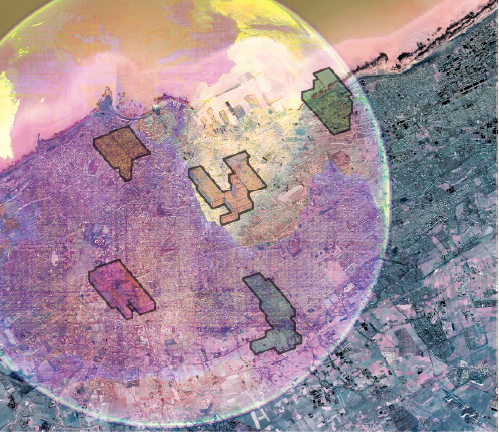
I want to return for a moment to the basis of this project — asking questions about empowerment through mapping and data collection and representation. Among the great concerns with power, data, and mapping are disempowerment, misrepresentation, and obfuscation, respectively. However, perhaps if we understand the systems by which these are constructed, we can become not only critics of but also activists within them, transforming the criticality that sometimes seems external to societal structures into something that is intrinsic and inherent to societal growth and development.
Perhaps social entrepreneurship is an exquisite product of opportunities for open self-expression and public conversations about convictions. And, finally, perhaps this constructive-criticism-turned-social-entrepreneurship is a form of love that can ultimately make a positive impact on our families, friends, neighbors, and communities.
---
I can't wait to see what forms the AAI participant projects take as they develop in the future and to see what configurations L'Uzine might take as it continues to do its incredible work
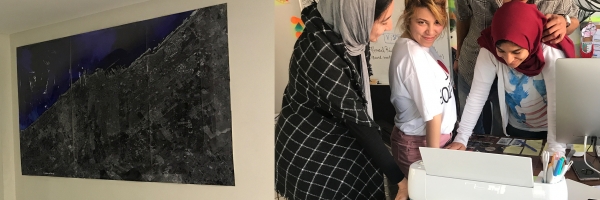
The participants have worked so incredibly hard to create insightful and beautiful projects.

With impressive tenacity and efficiency in a short amount of time, participants have developed profound bodies of research into the critical issues that concern them — surveying their neighbors, leading workshops with children, interviewing students on a university campus, and talking to other artists about collaborative projects. In the process, we are also developing new friendships and relationships across art, technology, and culture.

They planned and produced, explored and innovated, played and discovered. The projects are not yet complete. I hope that they will never be complete — they are so many potential paths to pursue! Some aspects of the projects will be furthered over the coming months, some tangents may be followed through the end of this year, others....we have yet to see!

Some of these project futures were imagined during the course of the panel review, which was inspiring and exciting! We were honored by the presence of Jennifer Rasamimanana, the Consul General of the United States in Casablanca; Maria Daif, Director of L'Uzine; Kenza Amrouk, independent curator; Mohammed Fariji, L'Atelier de l'Observatoir; and Kristi Jones, consultant and curator. Each member of the panel represented different aspects of the program goals and I am so proud that their observations included positive and constructive comments on the structures of the presentations, the level of craft, and insight into societal questions of the projects.

After completing and presenting their initial research and another ideation session, participants formed project groups — some related to the previous research, some new.
The groups are collecting, creating, designing, iterating, revamping, and installing their projects with excitement and enthusiasm. I am continuously impressed with how brave they are in choosing strategies for engaging people in public spaces, representing their ideas, speaking candidly about their concerns, and embarking on learning new technologies in the process!
Our space at L'Uzine has become an epicenter of exploration as each group returns and shares new cultural and technological discoveries.

After a survey introduction to new media techniques, individual participants have chosen different technologies to focus on as they develop group projects. With the help of FabLab Casablanca, they are using media such as laser cutting and Arduino sensor kits to build dynamic exhibits and online maps to include complex and thorough sets of information.
Le Littoral | Amine, Loubna, Taha


To Art or Not to Art | Jalila

ReZero4izer le Zero4 | Youssef and Yasser


I am so thrilled to work with this incredible cohort: a group of philosophers and artists with a wide range of artistic and technical talents with passions that include history and memory, environmental causes and science, as well as social justice and art. There is no way I could have ever predicted how amazing the participants in this program would be. I am blown away daily by their commitment, inquisitiveness, and nuanced approaches to the profound questions that move them. Through them, I am seeing Casablanca.
---
The departure point of our studies is the idea that sensory and spatial mapping are interpretations and projections.
A space represented by a void is not necessarily empty.
A space replete with information is not necessarily accurate.
Information can be left out.
Information can be filled in.
Working definitions:
DATA: quantifiable information
MAP: data interpreted through space
EMPOWERMENT: knowing how generate to data to create maps that represent one’s own opinions, convictions, or knowledge.
Vast quantities of data are generated each second as we function in our digital environments. Patterns are found in this data and mapped according to preset priorities. In Rhetorical City, we look into what happens when we define the data we generate and choose the priorities by which data is analyzed.

In conversation with our tools, we choose how to deconstruct and reconstruct information, including information and images of ourselves. Using bristol paper and vinyl cutting machines, participants created layered, three-dimensional portraits of themselves. In converting their pixel-based portraits into vectors, the participants chose the level of resolution of their portraits. In a more abstract version of the exercise, Abdelilah selected very large-scale pixels of an image based on parts he liked or didn't like rather than based on color or tone. The product is a mask for the image that reveals or conceals personal preference.
To put these tools and processes into context, we looked at a survey of digital fabrication technologies and visited FabLab Casablanca to see some of them in action!

We discussed the reciprocal cycles of interpretation between ourselves and our tools — be they hand or digital drawing, an X-Acto knife, a vinyl cutter, a laser cutter, or a CNC router.
As pattern-finders and interpreters, how do individuals perceive, translate, and analyze?

To engage our bodies in the construction and relation of meaning, we started the program with a game of synesthetic exquisite corpse: by sharing sensory experiences collected throughout L'Uzine with one another, the participants created interpretive sequences, which then led to conversations about how we structure meaning and information through the creation and comparison of categories.

How do we create categories? How do we structure knowledge? How do we recognize the subjective in the process of categorization and how do we allow this recognition to liberate us from the pre-judgements and perceptions we have inherited? How do we display and validate our interpretations in relation to other interpretive systems that exist?
How do these corporeal experiences, memories, and categories impact our reading of our urban spaces?

Through quick mapping exercises, participants then connected their physical (sensory) categories and memories to their cities.
Otherwise invisible moments of experience, communication, and translation thus became conceptual trajectories through the city.
How can the connection and interpretation of corporeal and urban spaces help us understand, articulate, and propose action for critical social questions?

Research groups formed in the first week based on a quick ideation exercise. Using GoPros, audio recorders, and cell phones, the groups started to articulate societal questions of physical and economic access in public space.
Questions of accessibility, diversity, gender, environment, and economy were among those discussed and explored. In the process, different forms of transit to explore the life of spaces such as an unfinished highway, the bus, a skatepark, and major intersections.

After this initial research, groups formed based on ideation exercises exploring interests, identifying questions, and expanding skill sets. The social challenges that participants have taken on are large and complex, the products and processes proposed are eloquent and elegant; working with them to develop these is not only fascinating, but also fun!

American Arts Incubator is an initiative of the U.S. Department of State's Bureau of Educational and Cultural Affairs and is administered by ZERO1. The incubator in Morocco is produced in collaboration with U.S. Consulate General in Casablanca and L'Uzine.
"The long poem of walking manipulates spatial organizations… it is neither foreign to them… nor in conformity with them."
—Michel de Certeau, The Practice of Everyday Life
I am so humbled by this opportunity to simultaneously teach and learn in Casablanca this March. And I am so excited and fascinated by the process of investigating how to explore questions of interest and concern to participants from a wide range of backgrounds.
It’s exhilarating to feel how aligned my host organization, L’Uzine, is with the goals and strategy for the exchange. After checking in this Saturday morning with Zineb at L’Uzine, it was clear that we are on the same page: working to develop an exchange that emphasizes interdisciplinary, cross-media, and cross-scalar collaboration and looking forward to the discoveries and experiences it might produce!
Together, workshop participants and I will be testing how research into personal narratives and critical cultural questions can be articulated through urban spaces; how collecting can lead to creating; how data visualization and mixed digital and manual prototyping can evoke and interrogate concepts; and how mixed qualitative-quantitative analysis can form the framework, foundation, and inspiration for novel sensory experiences.
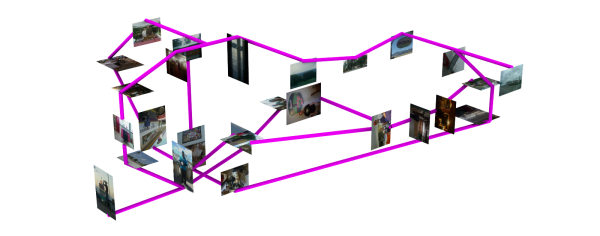
The topic of the AAI exchange in Casablanca is youth empowerment2. The idea of the workshops is to provide conceptual frameworks and technical skillsets that facilitate innovation, entrepreneurship, and engagement. For those participants developing an artistic identity, I hope the workshops can also help with discovering and choosing expressive media; while for more experienced participants, the skills may help bring new research and data-processing techniques into their work.
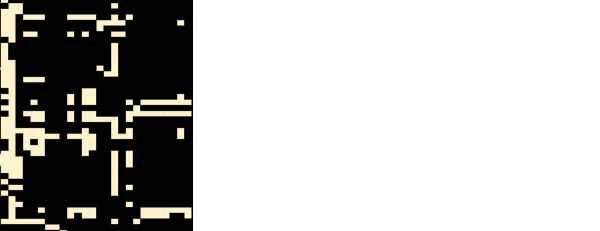
For me, the development of these frameworks started with my family and the childhood experience of immigration. More recently, I have started to dissect (and self-map) the complex paths that experience led me down.
The self-map image starts to get at the following questions:
What can we discover when we start to explore the individual as a vessel of socio-historic confluences through quantitative analysis?How does one identify, question, embrace, and express an awareness of one’s own familial and philosophical lineage(s) in the process of exploring socially-critical topics?Can some of it happen through numbers? Can spreadsheets shed their corporate connotations and become powerful tools for artists? Can some of it happen through the senses? How can we identify and deploy physical experiences in exploring and articulating intellectual challengesWhere is the limit of one type of mapping and what subjective additions to we make to maps when representation breaks down?And how can we unroll an experience to discover and display narratives of cultural relationships?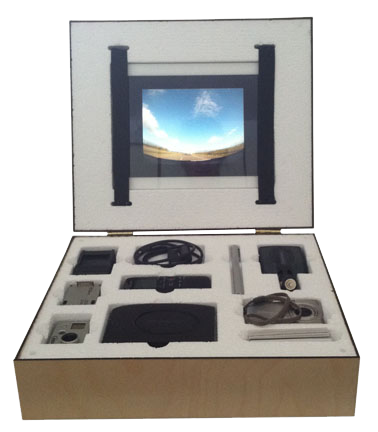
L’Uzine is already involved in exploring its urban context. In particular, the Aïn Sebaâ exhibit investigated its neighborhood. I hope that this exchange will offer a way to supplement the great work under way and to develop some novel approaches to understanding self and space.
Wait — did I already say how excited I am to see what backgrounds, interests, and media workshop participants bring into the fold? What implications might rhetorical construction, collection, data visualization, and mapping have for the modes of expression and creation that participants engage in? I look forward to observing and participating as responses to these questions (and more!) coalesce and dissolve in the experimental framework of the “Rhetorical City” workshops at L’Uzine!

2. According to World Bank’s “Kingdom of Morocco Promoting Youth Opportunities and Participation” (June 2012), the landscape of employment in Morocco has undergone radical shifts in this century.